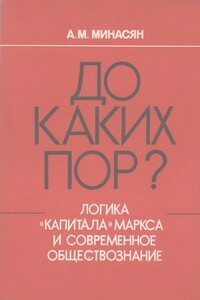Сложная идея
Почему любовь — не эмоция?
О попытке Элен Фишер увидеть любовь на экране магнитно-резонансного томографа рассказано в ее книге «Warum wir lieben. Die Chemie der Leidenschafl», Patmos, 2005; см. также этого автора: «Lust, Anziehung und Verbundenheit. Biologie und Evolution der menschlichen Liebe» in: Heinrich Meier und Gerhardt Neumann (Hrsg.): «Uber die Liebe. Ein Symposion», Piper 2001. Из новых книг о «химии любви» следует упомянуть: Theresa L. Crenshaw «Die Alchemie von Liebe und Lust. Hormone steuern unser Liebesleben», DTV 2003; Gabriele und Rolf Frobose «Lust und Liebe — alles nur Chemie?», Wiley-VCH 2004; Marco Rauland «Feuerwerk der Hormone. Warum Liebe blind macht und Schmerzen weh tun mussen», Hirzel 2007; «Liebe, Licht und Lippenstift: Das Beste von John Emsley», Wiley-VCH 2007; Klaus Oberbeil «Das Geheimnis der erotischen Intelligenz: wie Hormone und Biostoffe Gefuhle wecken und Beziehungen festigen», Herbig 2007. Роль окситоцина в половом поведении степных полевок изучали Larry Young, Zuoxin Wang, Thomas R. Insel «Neuroendocrine bses of monogamy» in: «Trends in Neuroscience», 21, 1998, p. 71–75; Larry Young, Roger Nilsen, Katrina G. Waymire, Grant R. MacGregor and Thomas R. Insel: «Increased affiliative response to vasopressin in mice expressing the Via receptors from a monogamous vole» in: «Nature» 400 (19), p. 766–776,1999; Larry Young, М.М. Lim, В. Gingrich: «Cellular mechanisms of social attachment» in: «Hormones and Behavior», 40,2001, p. 133–138; Larry Young, Zuoxin Wang: «The neurobiology of pair bonding» in: «Nature Neuroscience», 7,2004, p. 1048/1054. Критика этих взглядов в: Sabine Fink, Laurent Excoffier, Gerald Hecker «Mammalian monogamy is not controlled by a single gene» in: «Proceedings of the national Academy of Sciences of the United States, Nr. 7,2006; Gene E. Robinson, Russell D. Femald, David F. Clayton: «Genesand social behavior» in «Science», 7 (322), 2008, p. 896–900. История Маршалла Розенберга взята из: «Gewaltfreie Kommunikation. Eine Sprache des Lebens», Junfermann, 6 Auflage, 2007.0теории эмоций и чувств см.: William Lyons «Emotions», Cambridge University Press 1980; Ronald de Sousa «The Rationality of Emotion» MIT Press, 1987; Paul Griffiths «What Emotions really Are. The Problem of Psychological Categories», University of Chicago Press, 1997; Antonio Damasio: «The Feeling of what Happens: Body and Emotion in the Making of Consciousness», Harcourt Brace and Co, 1999; того же автора: «Descartes Irrtum. Fuhlen, Denken und das menschliche Gehim», List, 1994; того же автора: «Der Spinoza-Effekt. Wie Gefuhle unser Leben bestimmen», List, 2003; Achim Stephan и Henrik Walter (Hrsg.) «Natur und Theorie der Emotion», Mentis-Verlag 2003; Martin Hartmann «Gefuhle. Wie die Wissenschaften sie erklaren», Campus, 2005; Heiner Hastedt «Gefuhle. Philosophische Bemerkungen», Reclam, 2005. Главное сочинение УильямаДжеймса: «The Principlesof Psychology», Henry Holt and Company 1890. Главный труд Гильберта Райла можно найти под названием: «Der BegriffdesGeistes», Reclam, 1986.
Мой промежуточный мозги «я»
Могу ли я любить по собственной воле?
Арнольд Гелен впервые определил человека, как «культурное существо» в своей книге «Der Mensch. Seine Natur und seine Stellung in der Welt», Junker und Dunnhaupt 1940. Цитированные места из сочинений Жана-Поля Сартра взяты из его эссе по поводу «Трансцендентности “я”» и «Наброски к теории эмоций». Они напечатаны в книге «Die Transzendenz des Ego. Philosophische Essays 1931–1939», Rowohlt 1997. Цитата Фрица Римана взята из его книги «Die Fahigkeit zu lieben», Reinhardt, 8 Auflage 2008. Стихотворение Эрнста Яндля напечатано в сборнике под редакцией Зиблевского: «Ernst Jandl. Poetische Werke», Bd.8, Luchterhand 1997. Исследования «зеркальных нейронов» Джакомо Риццолатти подытожены в его совместной с Коррадо Синигалья книге «Empathie und Spiegelneurone: die biologische Basis des Mitgefuhls», Suhrkamp 2008. Джон Мани впервые употребил термин «карта любви» (love-map) в своей книге «Love and Love Sickness: the Science of Sex, Gender Difference and Pair-Bonding», Johns Hopkins University Press; в его же книге: «Love-maps: Clinical Concepts of Sexual/ Erotic Health and Pathology, Paraphilia, and GenderTransposition in Childhood, Adolescence and Maturity», Irvington 1986; тою же автора «Vandalized Love-maps: Paraphilic Outcome oh 7 Cases in Pediatric Sexology», Prometheus Books, 1989; того же автора: «The Love-map Guidebook: A Definitive Statement», Continuum 1999. О концепции «карт любви» см. также Ayala Malakh Pines «Falling in Love: Why We Choose the Lovers We Choose», Taylor & Francis 2005. Опыт с мостом был описан Артуром Ароном и Дональдом Даттоном в их статье «Some evidence for heightened sexual attraction under conditions of high anxiety». Journal of Personality and Social Psychology, 30, 1974, p. 510–517. Теория эмоций Стэнли Шахтера была впервые представлена в совместной с Джеромом Синджером статье «Cognitive, Social, and Physiological Determinants of Emotional State» in «Psychological Review», 69, 1962, p. 279–399. Того же автора: «The interaction of cognitive and physiological determinants of emotional state» in: Leonard Berkowitz (ed.) «Advances in Experimental Social Psychology»,



